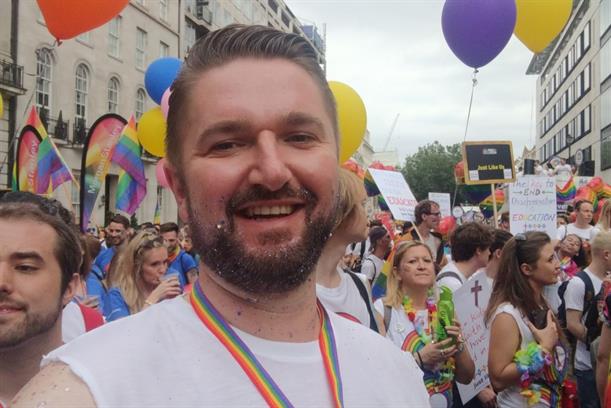A view from Lee Mabey, Media Growth Strategy Director at Dentsu UK and Ireland and co-chair of LGBT+ network &Proud.
Brands must think in more detail about how their media plans meet the needs of underrepresented groups.

As a gay kid growing up in Kent during the 1990s and early noughties, I seldom saw positive depictions of people like me in TV shows, let alone in the aspirational world of ads. The first ad on TV I recall with gay men depicted was for Impulse – and it was only shown after 11pm.
Creatives have been righting this wrong for the past few years. Renault and McCain represent queer family units, Tesco includes different ethnic groups in its ongoing “Food love stories” campaign and Maltesers continues to embrace disability in its TV ads.
We can also all think of myriad examples where brands have earnestly tried to engage diverse groups and faced a backlash from their intended target audience for missing the mark. What links many of these campaigns is a short-term mindset that failed to go beyond the initial activation.
Marketers should not let this deter them from starting their own journey in embracing diverse audiences; those that do their due diligence and adopt a long-term position to create lasting and authentic connections can benefit from loyal brand advocates. But representation is only part of the story, and our industry needs to go much further than creativity to ensure we are being fully inclusive.
I’m proud to be driving Dentsu’s solution to this, a pioneering new media proposition called “Together”, which will help brands make more authentic connections with diverse audiences across the country. This goes beyond a typical mainstream media plan and instead focuses on building long-term relationships with a wider pool of diverse publishers and increasing brands’ understanding of underrepresented groups.
Together will also challenge the inherent bias in blocklists and address the issues of measuring campaign effectiveness for certain sections of society. The initial response has been heartening, and we’re already consulting with brands and partners looking to progress and improve.
Embracing diversity in media schedules is no longer a “nice-to-have”. It is a business imperative. The cumulative value of black, Asian, ethnically diverse, 50-plus, and LGBT+ audiences in the UK is conservatively estimated to be £691bn. Can brands really afford to ignore these groups any longer? The answer is no. And yet, many still have no long-term strategy for marketing towards these demographics.
Communicating to LGBT+ people only during Pride month, simply adding a black square to your Instagram grid in support of Black Lives Matter or tweeting Eid Mubarak is simply not good enough. These flagpole moments must be the start of your conversation, not your token contribution to diversity for the year. This contributes to what we call the Inclusivity Gap: the difference between how well a marketer thinks they are engaging diverse groups versus the lived experience of that group.
Partnering diverse media owners demonstrates a commitment to inclusivity and a willingness to support the communities you are looking to engage.
BBC supported the launch of ground-breaking drama I May Destroy You with the digital zine The Ins and Outs of Consent, produced by The Face and Gal-dem, a digital and print publication, produced by people of colour from marginalised genders. Jaguar’s incredible work with Attitude has included bespoke creative referencing gay bear culture and the “Jag race” series, where drag queens raced each other in I-pace models. These partnerships adopted a lexicon and unique viewpoints to generate unmatchable levels of authenticity.
I am passionate about making the media landscape more inclusive for everyone. We need to demonstrate to advertisers that they play a vital role in supporting this ecosystem. Our industry has a collective responsibility to support diverse communities so that they can continue to own and tell their own stories and viewpoints. We must better understand the wants of underserved audiences to close the Inclusivity Gap.
Creatives cannot do it on their own. The media industry needs to do better. It is time to get to work.
This article was first published in Campaign here.



